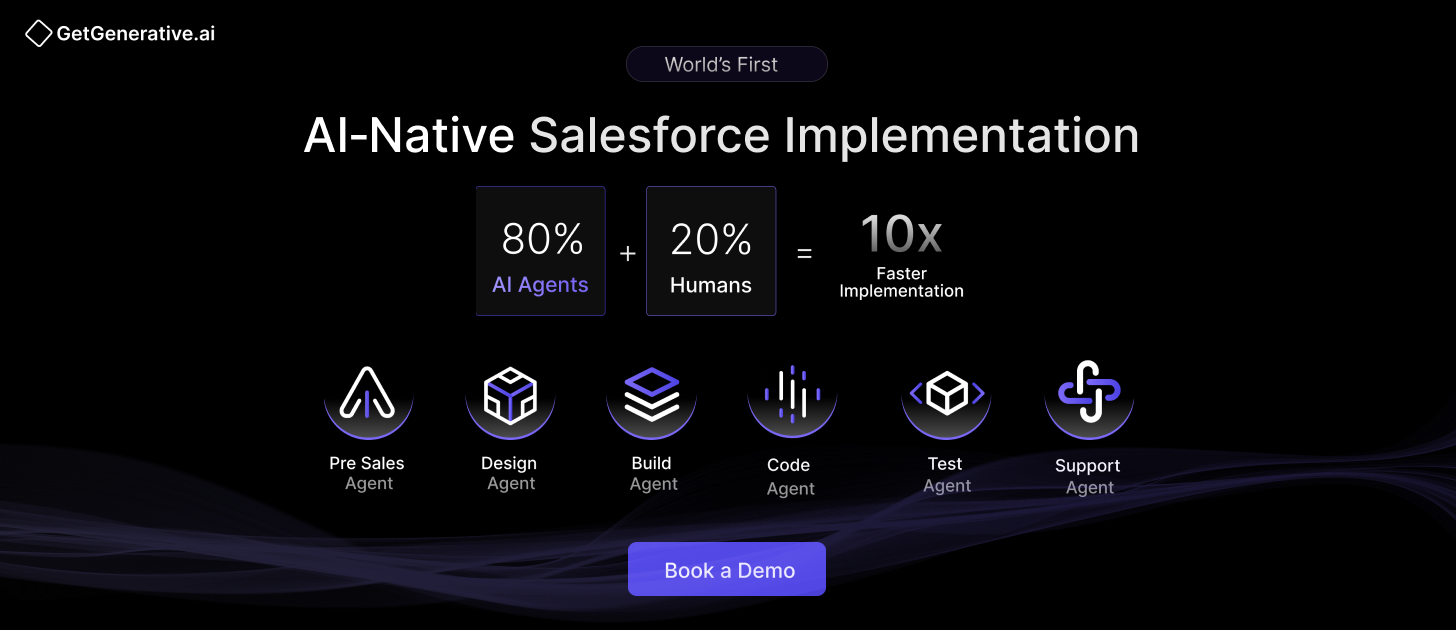Key Considerations for a Successful Salesforce Financial Cloud Implementation
Implementing Salesforce Financial Cloud successfully isn’t just about activating licenses or installing features—it requires strategic planning, clean data, and a cross-functional approach.
This guide outlines the key considerations that can make or break your Salesforce Financial Services Cloud implementation in 2025.
1. Strategic Planning: Set the Foundation Early
Understand Your Business Needs
Start with a deep dive into your current operations. Map out critical workflows, pain points, and bottlenecks. Ask:
Where are inefficiencies costing time or money?
Which client experiences need improvement?
These insights will guide what FSC features to prioritize—whether it’s lead management, onboarding automation, or compliance reporting.
Define Measurable Goals
Don’t just say “we want to improve.” Quantify your goals. Examples:
Improve lead response time by 30%
Reduce onboarding time from 7 days to 3 days
Increase advisor productivity by 20%
These benchmarks will serve as your north star throughout the project.
Build a Cross-Functional Team
A successful FSC implementation involves more than just IT. Bring together:
Financial advisors who understand customer workflows
IT teams who manage data and integration
Project managers to align timelines and stakeholders
Cross-functional collaboration ensures no critical piece is overlooked.
2. Data Preparation and Migration: Clean, Migrate, Validate
Start With Clean Data
Data is your most valuable asset. Begin by:
Removing duplicates
Standardizing formats
Verifying completeness
Clean data is key to accurate reporting, meaningful insights, and user trust.
Don’t Delay Data Planning
Many implementations falter because data migration is treated as an afterthought. Start early:
Define data sources and fields to migrate
Identify data owners for validation
Establish mapping rules between legacy systems and FSC
Test Before You Go Live
Before migrating production data, run trial migrations with test datasets. This helps validate:
Field-level mapping
Workflow compatibility
Overall system performance
Related Read – Salesforce Financial Cloud Implementation Guide
3. Smart Customization and Configuration
Configure First, Customize Second
Salesforce Financial Services Cloud comes with powerful out-of-the-box features tailored to the financial sector. Leverage them before jumping to custom code.
Avoid Over-Customization
While it’s tempting to tweak every workflow, too many customizations can:
Increase technical debt
Complicate future upgrades
Drive up implementation costs
Focus on business-critical enhancements and use Salesforce’s declarative tools whenever possible.
4. Seamless System Integration
Identify What Needs to Connect
Determine which internal and third-party systems must integrate with FSC:
Core banking or insurance systems
Document repositories
Customer communication tools
Marketing automation platforms
Choose the Right Integration Approach
Your integration method should balance cost, complexity, and performance:
Salesforce APIs: Ideal for standardized, scalable integration.
MuleSoft or other connectors: Great for rapid, low-code integration across systems.
Custom Integration: When business logic is highly specialized or connectors are unavailable.
5. Change Management and User Training
Train Early and Often
Training should be hands-on, role-based, and continuous. Use:
Interactive workshops
LMS-hosted video tutorials
Live Q&A sessions
Overcome Resistance to Change
Employees may hesitate to adopt a new system. Mitigate this by:
Involving them in the early stages of planning
Clearly explaining benefits (less manual work, better visibility, etc.)
Providing ongoing support
6. Regulatory Compliance and Security
Stay Aligned with Financial Regulations
FSC supports compliance with major frameworks like GDPR and CCPA, but regional or sector-specific rules may apply. Ensure configurations support:
Audit trails
Consent management
Data retention policies
Strengthen Data Access and Security
Use role-based access control (RBAC) to limit sensitive data exposure. Also consider:
Two-factor authentication
IP restrictions
Shield Platform Encryption for data at rest and in transit
7. Testing and Quality Assurance
Run Pilot Programs
Before company-wide rollout, run pilots with a controlled group. Focus on:
Day-to-day workflows
Data accuracy
User feedback
Use Realistic Test Scenarios
Simulate real business use cases like:
Opening new financial accounts
Processing loan applications
Assigning leads to advisors
This helps validate both system readiness and business fit.
8. Post-Launch Support and Optimization
Monitor System Performance
After go-live, track metrics such as:
User adoption rate
Case resolution time
System uptime
Use this data to identify gaps and areas for optimization.
Leverage Salesforce Support Resources
Utilize:
Salesforce Trailhead for ongoing learning
Partner support teams for complex issues
Product documentation and release notes for continuous improvements
9. Measure Success and ROI
Track Financial and Operational KPIs
Quantify your return by measuring:
Revenue growth per advisor
Client satisfaction scores
Cost-to-serve reductions
Align Outcomes with Strategic Goals
Ultimately, FSC should help you:
Deliver superior customer experiences
Improve compliance reporting
Scale your business with confidence
If it’s not driving your business strategy forward, revisit your configuration and training approach.
Also Read – Key Features of Salesforce Financial Services Cloud
Conclusion
Implementing Salesforce Financial Cloud is a strategic investment that can transform financial operations and enhance client experiences. You can ensure a successful implementation that drives measurable results by following these considerations: data preparation, thoughtful customization, robust training, and compliance focus.
At GetGenerative.ai, our proprietary AI platform powers purpose-built Agents that automate your entire Salesforce implementation, while our top 1% global experts provide oversight, strategy, and quality control.
10x faster. AI-first. Human-reviewed.
👉 Explore our AI Salesforce Consulting Services
FAQs
1. What is Salesforce Financial Cloud used for?
Salesforce Financial Cloud helps financial institutions manage client relationships, automate workflows, and ensure regulatory compliance.
2. How long does implementation typically take?
The timeline varies but generally ranges from 3 to 12 months, depending on complexity and customization.
3. Is customization mandatory for Salesforce Financial Cloud?
While not mandatory, customization helps align the platform with your specific business needs for maximum efficiency.




